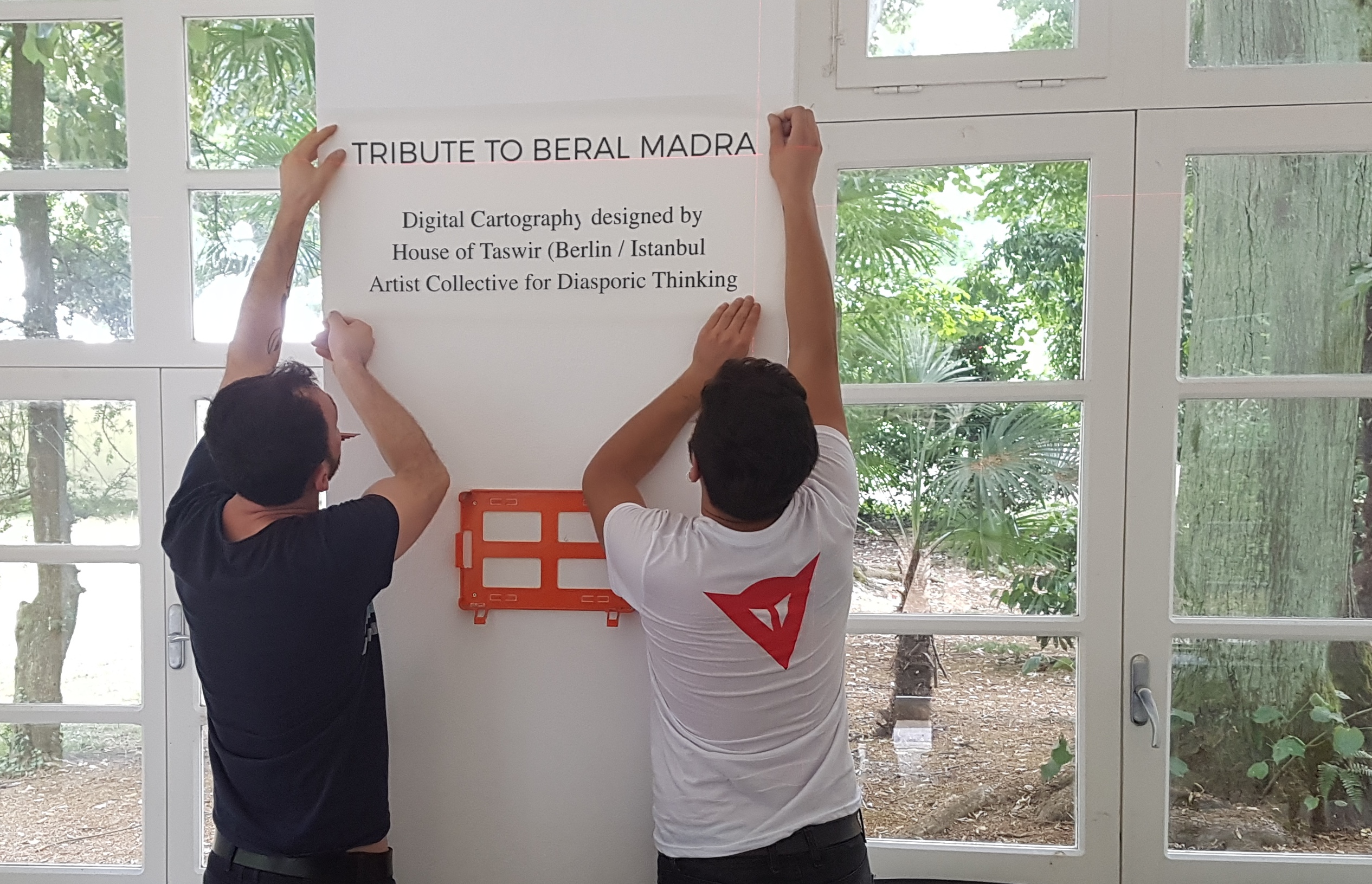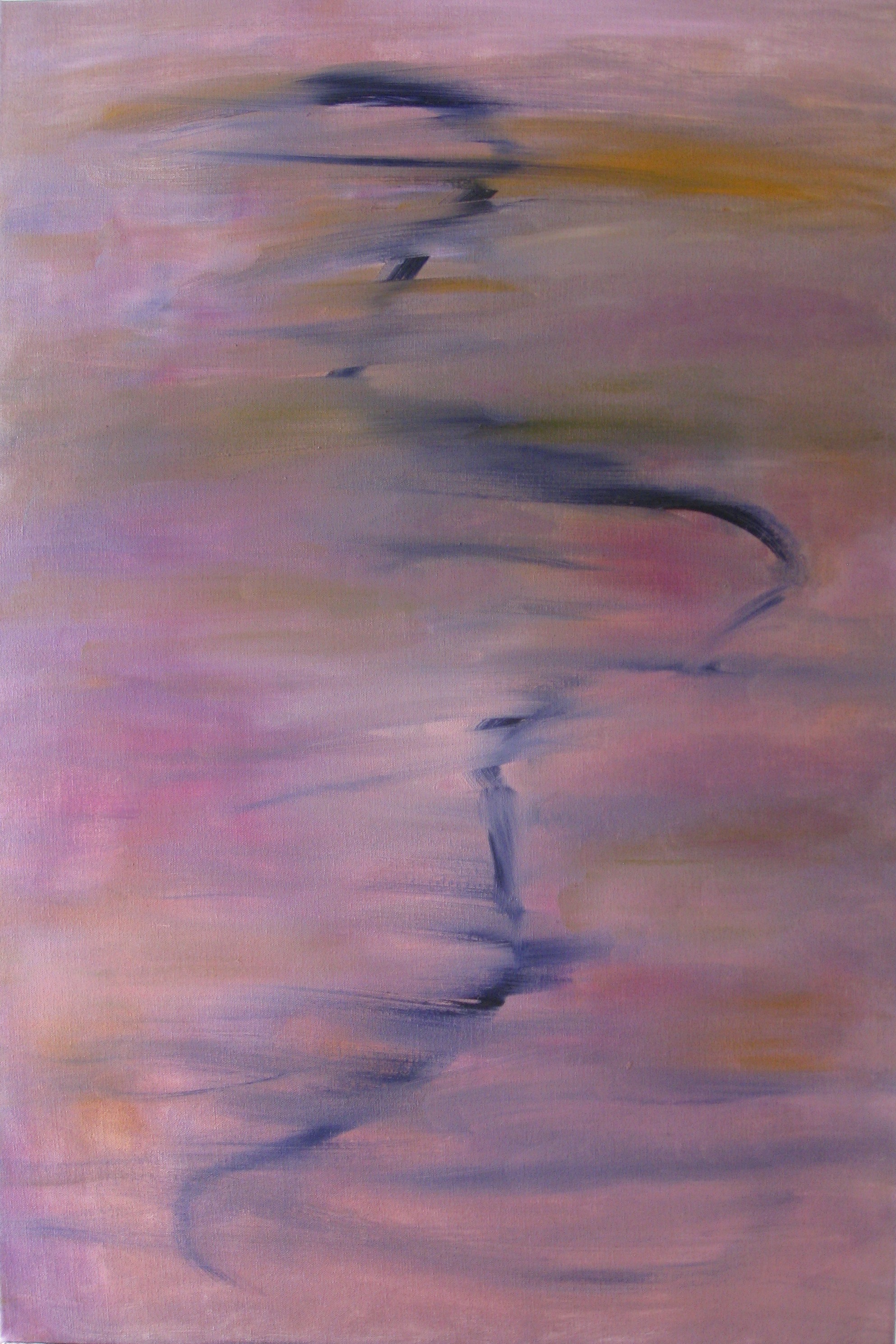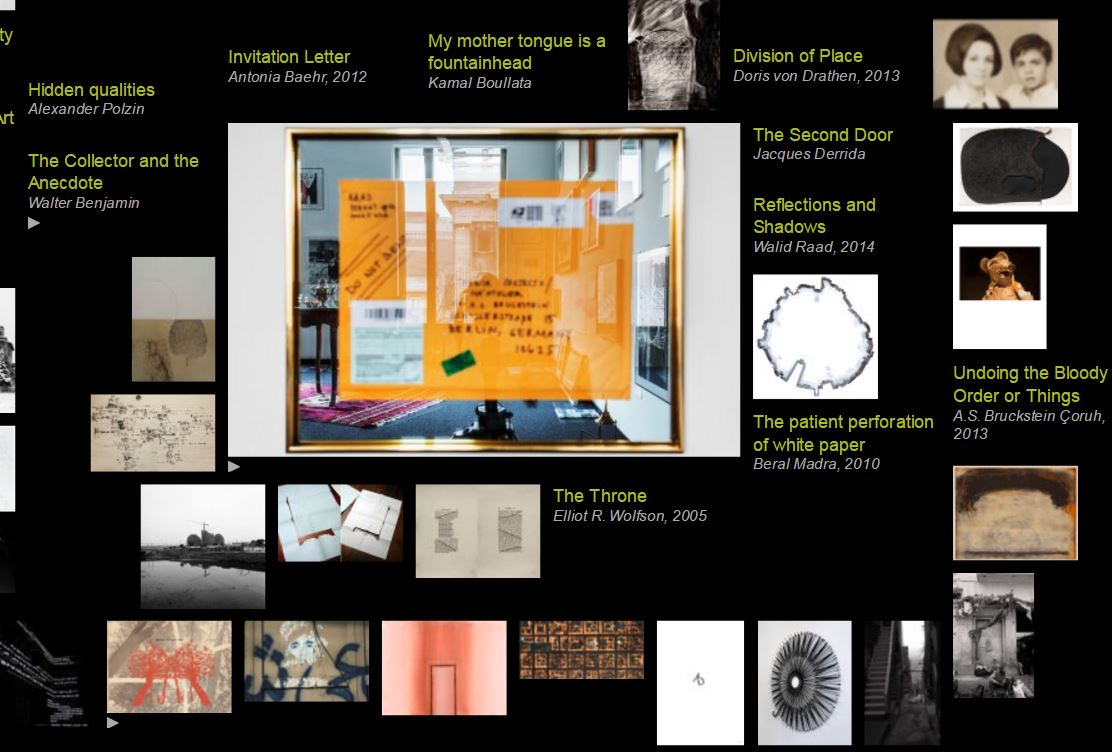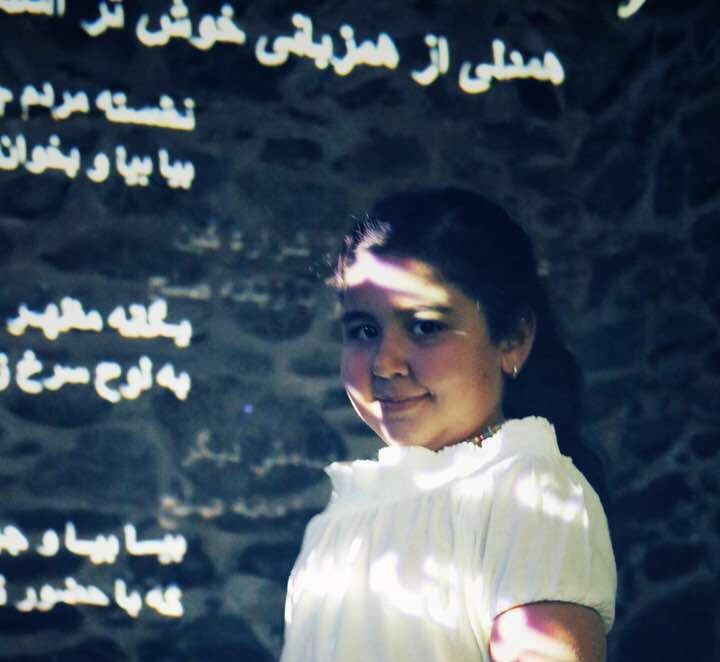The Taswir Atlas
TASWIR in Arabic, Persian, Ottoman-Turkish, Hindi, and Urdu
means “image making”, “picturing”, “representation.” The Taswir atlas got started with the Berlin exhibition TASWIR 2009/2010 and is currently developed into an encyclopedic, fractal epistemic architecture which may also emerge as an artistic cartography installation in an exhibition framework.
The Principle of Free Association
A Taswir atlas allows for the display an open number of artifacts, objects, soundclouds, filmclips, texts, that may enter via an edited matrix of attributes into variable, unpredictable, and dynamic relations with each other.
Aby Warburg and the Displacement of the Display Walls
A Taswir atlas simulates the ‘displacement of the display walls’, the gesture by which art historian Aby Warburg in his legendary pictorial Mnemosyne atlas kept extending, relocating and regrouping his books, pictures and images in the Library of Cultural Sciences in Hamburg.[1]
Relocating of the Axis of Modernity
A Taswir atlas relocates the European axis of Modernity taking up ancient and contemporary lateral methods of thinking that have withdrawn from European cultural memory. The Taswir atlas includes objects and literary / accustic / visual traditions from Islamic, Arabic, Judeo-Arabic, Persian, Ottoman, and other traditions to be constituents of a forthcoming contemporary order of things that no longer operates in the geographies of East and West. [2]
“I Have Nothing to Say Only to Show”
Like in the architectures of a medieval literary page, and just as in Freud’s reading of dreams, the Taswir atlas creates fleeting nodes of spatial and temporal associations: seemingly accidental clusters of material are associated according to latent, subcutaneous, and precise semantic and visual correlations. The associative clusters and nodal points of the atlas operate by poesiis, a method also used in psychoanalysis and in the literary montage: Displacements, dissociations, inversions of meaning, etc.:
“Method of this work: literary montage.”[3]
“The Atlas doesn’t detach objects according to pre-established categories, rigorous definitions, or ideal hierarchies: it satisfies itself collecting, that is, respecting, the great ‘fragmentation’ of the world.”[4]
Object-Relations: Ancient Teachings of Indeterminacy
The matrix underlying the algorithmic order of the Taswir atlas is modeled after 10th to 13th century Arabic and Judeo-Arabic theories of “relative attributes”, advocating the indeterminacy and relativity of human knowledge concerning the divine subject.[5] What a Taswir atlas does, as Jewish, Islamic, and Byzantine traditions have done before, is to substitute material objects for the divine subject, to “bend” its attributes towards the materiality of the object.
What emanates from this medieval-contemporary correspondence is a variable cartography, an arrangement of objects which suggests an open ended associative process of a non-linear order.
- Aby Warburg, Der Bildatlas MNEMOSYNE, Gesammelte Schriften II, 1, ed. M. Warnke and C. Brink, Berlin: Akademie Verlag, 2003.
- Jalal Toufic, „The Contemporary is Still Forthcoming,“ in: e-flux journal #28, 10/2011.
- Walter Benjamin, Das Passagen-Werk, Gesammelte Schriften, V, 2, ed. Rolf Tiedemann, Frankfurt a. M.: Suhrkamp, 1982, 1030.
- Georges Didi-Huberman from a display text on Walid Raad, The Atlas Group, shown at the exhibition curated by Georges Didi-Huberman, “Atlas: How to Carry the World on One’s Back”, 2010-2011. See also Susan Buck-Morss, and on the dynamics of relativity in objects relations, Nicolas Bourriaud, Relational Aesthetics, Dijon: Les presses du réel, 2002.
- Gutmann, Die Geschichte der Attributenlehre, Gotha, 1877.
Atlas Projects
I Beg You My Friend
I Beg You My Friend: Litlosh Temuna. Digital Mnemosyne atlas compiled at the occasion of the symposium “At the Abyss of Images”, St. Matthäus, Berlin 2023. With text fragments from 36 authors. Dedicated to Michal Sapir, the translator of Georges Didi-Huberman’s Images malgré tout (2003) into Hebrew.
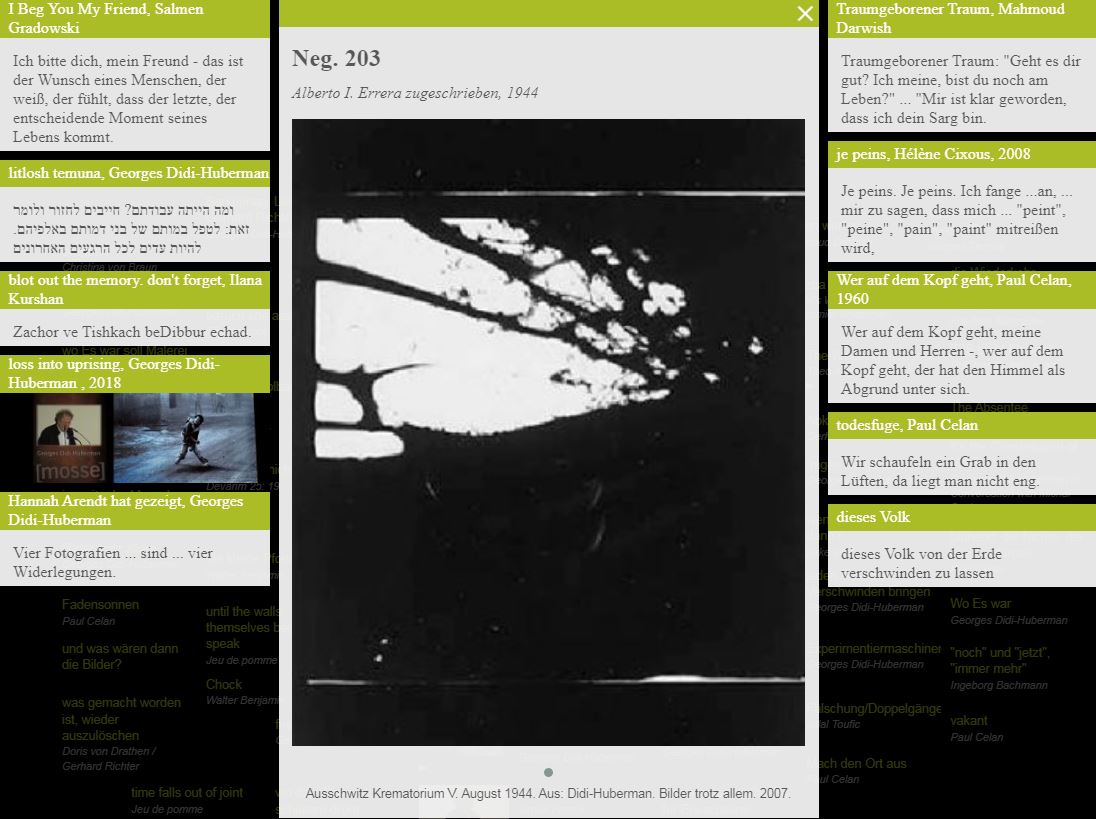
BM Contemporary
digital cartography showing fragments from the archive of Istanbul curator, writer, and art critic Beral Madra. Ongoing project of artistic research presented heretofore in 4 editions, in Split, Istanbul, Berlin. BM Contemporary hosts one of the most extensive artist networks in Turkey, extending to the entire MENA, Eastern European, Middle Asian Region.
Lady Dada Kalam
atlas comprised by A.S. Bruckstein Çoruh, mirror to the exhibition-performance “Lady Dada Kalam,” Kunsthaus KuLe June 29 – July 2nd, 2017, including all works of this exhibition past and present according to eleven rooms: White Cube, Black Box, Museum, Wunderkammer, Salon, Bazaar, Academy, Café, Stage, Back Stage, Holy-of-Holies.

Meine kleine Mnemosyne
comprised by A.S. Bruckstein Çoruh, mirror to the exhibition “Meine Kleine Mnemosyne”, Pergamon Palais 2015-2016, including all works past and present according to four thematic rooms: écriture(s), face(s), architecture(s), Taswir.
Kabul Atlas of Poetry
comprised by A.S. Bruckstein Çoruh together with Huma Sherzai and Kabul team. The Kabul Atlas of Poetry depicts the pop-up exhibition on International Peace Day at Babur Garden’s Queen Palace, Kabul, in September 2017. Curated by Huma Sherzai, Edris Azizi & Colleagues. With texts in Pashto, Dari, Arabic, English, u.a. With the support of GIZ.
